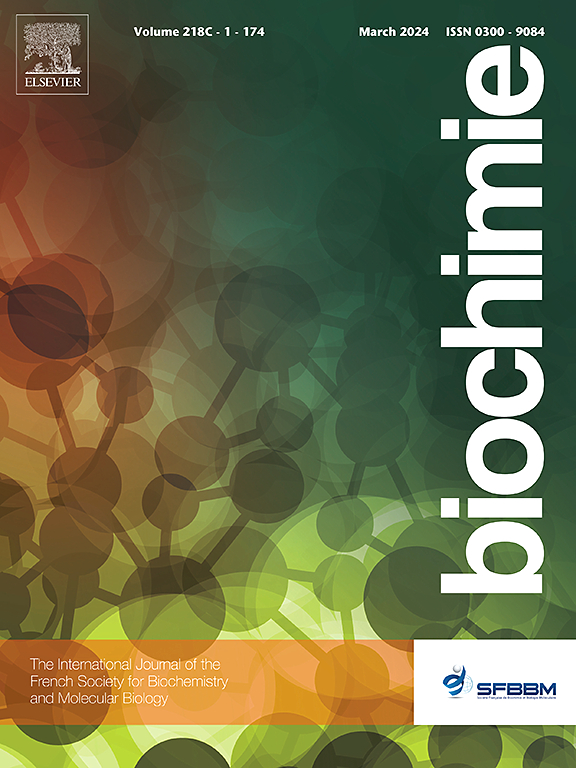Repurposing of propafenone, an FDA approved anti-arrhythmic drug for antileishmanial therapy
IF 3
3区 生物学
Q2 BIOCHEMISTRY & MOLECULAR BIOLOGY
引用次数: 0
Abstract
Elimination of the Neglected Tropical Disease Visceral Leishmaniasis (VL) is a Sustainable Development Goal. It is caused by Leishmania donovani. The therapeutic options for the treatment of VL are limited due to problems such as drug resistance and toxicities. Drug repurposing can be a promising alternative in this case. In this work, the antileishmanial potential of FDA approved anti-arrhythmic drug propafenone has been evaluated for repurposing. It reduced the viability of L. donovani promastigotes and intracellular amastigotes with an IC50 of 8.25 ± 2.48 μM and 11.19 ± 0.01 μM respectively. In the macrophages, the IC50 was 32 ± 7.07 μM. Propafenone treatment altered morphology of parasites and induced damage to the body and flagellum. The cell membrane became damaged and more permeable when the promastigotes were treated with this drug. However, no change in the cell membrane potential was detected. Treatment with propafenone was detrimental to mitochondrial health of L. donovani. It significantly depolarized the mitochondrial membrane and decreased the ATP levels in the promastigotes. Propafenone also induced oxidative stress in the parasites. Cell cycle arrest was detected at the G2/M stage. The data suggests that propafenone has antileishmanial potential and can be evaluated further in an experimental VL model.

重新利用普罗帕酮,FDA批准用于抗利什曼病治疗的抗心律失常药物。
消除被忽视的热带病内脏利什曼病是一项可持续发展目标。它是由多诺瓦利什曼原虫引起的。由于诸如耐药性和毒性等问题,治疗VL的治疗选择有限。在这种情况下,药物再利用可能是一个很有前途的选择。在这项工作中,FDA批准的抗心律失常药物普罗帕酮的抗利什曼病潜力已被评估为重新利用。降低了多诺瓦氏L. promastigotes和胞内无尾线虫的生存能力,IC50分别为8.25±2.48 μM和11.19±0.01 μM。巨噬细胞的IC50为32±7.07 μM。普罗帕酮处理改变了寄生虫的形态,并引起对机体和鞭毛的损伤。当用这种药物治疗原毛菌时,细胞膜被破坏,渗透性更强。细胞膜电位未见明显变化。普罗帕酮治疗对多氏乳杆菌线粒体健康不利。它显著地使线粒体膜去极化,并降低了原毛囊中ATP的水平。普罗帕酮也诱导了寄生虫的氧化应激。G2/M期检测到细胞周期阻滞。这些数据表明普罗帕酮具有抗利什曼原虫的潜力,可以在实验VL模型中进一步评估。
本文章由计算机程序翻译,如有差异,请以英文原文为准。
求助全文
约1分钟内获得全文
求助全文
来源期刊

Biochimie
生物-生化与分子生物学
CiteScore
7.20
自引率
2.60%
发文量
219
审稿时长
40 days
期刊介绍:
Biochimie publishes original research articles, short communications, review articles, graphical reviews, mini-reviews, and hypotheses in the broad areas of biology, including biochemistry, enzymology, molecular and cell biology, metabolic regulation, genetics, immunology, microbiology, structural biology, genomics, proteomics, and molecular mechanisms of disease. Biochimie publishes exclusively in English.
Articles are subject to peer review, and must satisfy the requirements of originality, high scientific integrity and general interest to a broad range of readers. Submissions that are judged to be of sound scientific and technical quality but do not fully satisfy the requirements for publication in Biochimie may benefit from a transfer service to a more suitable journal within the same subject area.
 求助内容:
求助内容: 应助结果提醒方式:
应助结果提醒方式:


